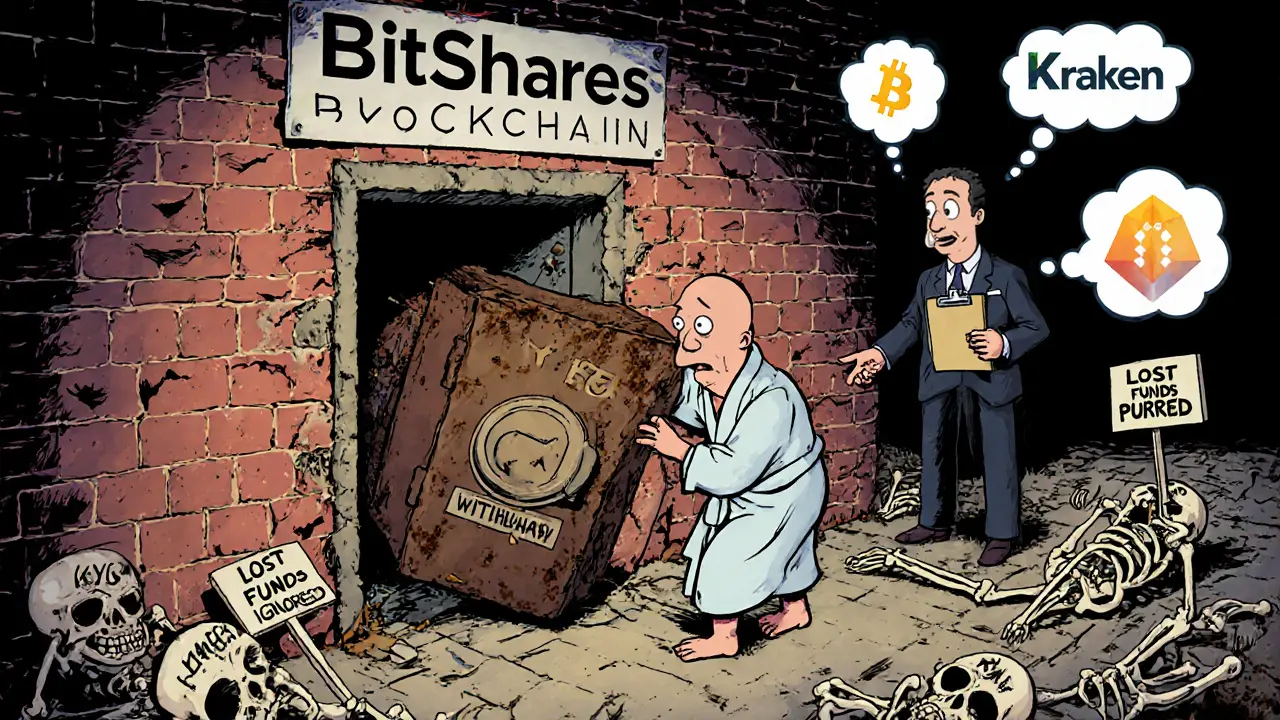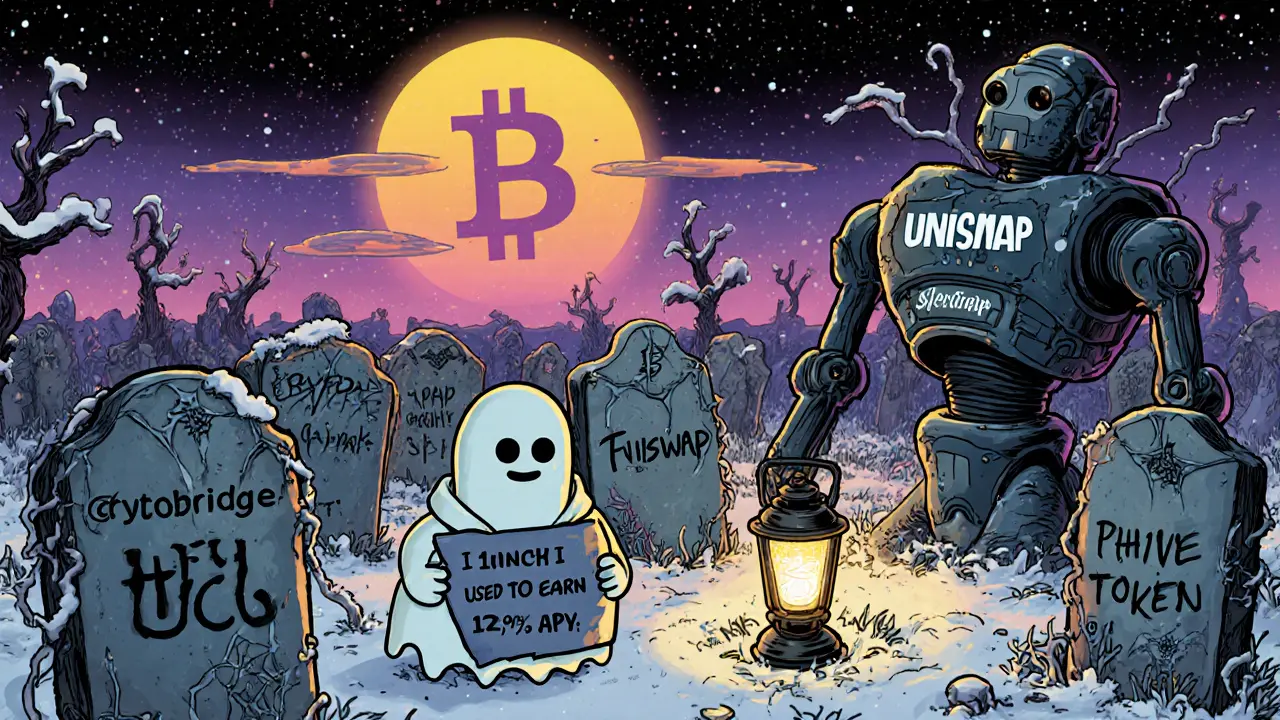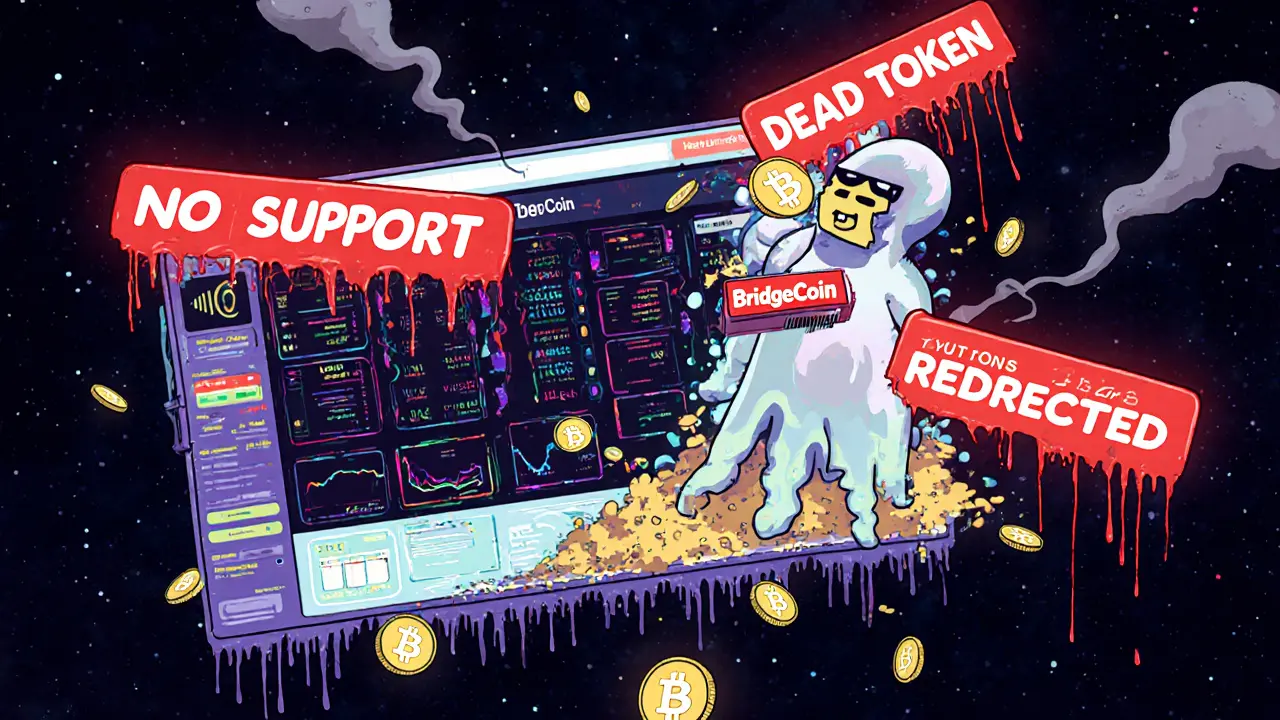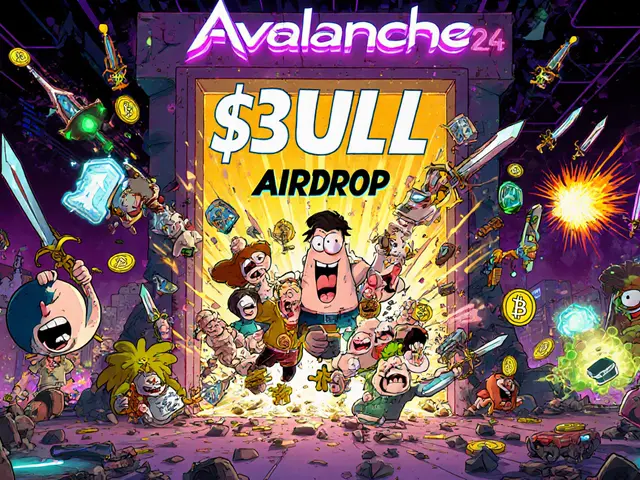Crypto Exchange Safety Checker
Is This Exchange Safe?
Check if a crypto exchange meets essential safety criteria based on the CryptoBridge case study.
Safety Assessment
When you think of a crypto exchange, you probably picture Coinbase, Kraken, or Binance - platforms where you click a button, buy Bitcoin, and move on. But what if you wanted to trade without giving up control of your keys? What if you wanted a platform that claimed to be fully decentralized but still let you buy crypto with a credit card? That’s where CryptoBridge comes in - or at least, where it used to be.
CryptoBridge wasn’t just another exchange. It was built on the BitShares blockchain, a niche but technically interesting network designed to handle high-speed trades without middlemen. Its whole pitch was simple: you keep your private keys, no one holds your crypto, and you still get features like margin trading and fiat on-ramps - things most decentralized exchanges (DEXs) like Uniswap don’t offer. Sounds perfect, right? But here’s the catch: CryptoBridge might not even exist anymore.
How CryptoBridge Was Supposed to Work
CryptoBridge’s architecture was built around the BitShares blockchain, which uses a Delegated Proof-of-Stake (DPoS) system. That means trades settle in about three seconds - way faster than Ethereum-based DEXs. Unlike centralized exchanges, where your Bitcoin sits in a company’s wallet, CryptoBridge required users to connect their own BitShares wallet. Every trade happened directly on the blockchain. No intermediaries. No custodial risk.
The exchange had its own token, BridgeCoin (BCO), which wasn’t just a trading pair - it was the engine that powered rewards. Holders of BCO got 70% of all trading fees generated on the platform. That’s a rare model. Most exchanges burn fees or give them to shareholders. CryptoBridge gave them directly to users who staked their tokens. If you held BCO and traded on the platform, you were literally earning a cut of the action.
It also offered nine features that made it stand out:
- Fiat gateway (buy crypto with USD via bank transfer)
- Credit card purchases
- Margin trading up to 3x leverage
- Full decentralized exchange (no KYC required)
- Launchpad for new token listings
- Desktop and mobile apps
- Over-the-counter (OTC) trading
- BitShares wallet integration
- Community-driven governance
That last one was key. Token holders could vote on new listings, fee structures, and platform upgrades. It was democracy in action - but only if you were active enough to care.
The Reality: A Platform Left Behind
Here’s where the story turns dark. While CryptoBridge made bold claims, its execution was shaky from the start. By 2018, users were already reporting lost funds on BitcoinTalk forums. One user, 'CryptoVictim', claimed they lost 3.2 BTC after depositing to the platform. Support never replied. Another thread titled "CryptoBridge is a SCAM" had over 80 responses.
Fast forward to 2025, and the evidence of abandonment is overwhelming:
- The official website, crypto-bridge.org, now redirects to CoinCodex’s exchange listing page.
- The last commit to its GitHub repository was on November 17, 2021 - over three years ago.
- BridgeCoin (BCO) was removed from CoinGecko in Q2 2022 due to "insufficient market activity."
- DeFi Llama shows zero liquidity pools tied to CryptoBridge.
- No active community moderators, no updates, no customer support.
Even the platform’s own documentation - once hosted on GitHub - hasn’t been updated since 2021. For a crypto exchange, that’s a death sentence. In this space, if you stop updating, you stop working. And if you stop working, users leave. And once users leave, the token loses value. And once the token loses value, the incentive to stake vanishes. It’s a death spiral.
Why CryptoBridge Failed When Others Succeeded
CryptoBridge tried to do something ambitious: merge the convenience of centralized exchanges with the security of decentralized ones. But it did it on a dying blockchain. BitShares, the foundation it relied on, has a market cap of less than $100 million as of October 2025 - ranked #47 on CoinGecko. Compare that to Ethereum, which powers Uniswap and has a market cap over $200 billion. No one builds on top of a sinking ship.
Meanwhile, the real winners in decentralized finance aren’t single-chain DEXs. They’re cross-chain aggregators like 1inch and Matcha. These platforms pull liquidity from dozens of blockchains, offer better prices, and still let users keep control of their keys. They don’t need to reinvent the wheel - they just connect the existing ones.
Also, CryptoBridge ignored regulatory reality. The SEC’s 2024 framework for DEXs specifically called out platforms offering fiat gateways without KYC. CryptoBridge offered both - making it a target for enforcement. It didn’t have the legal team to fight back. It didn’t even have a team.
And then there’s the user experience. Setting up CryptoBridge wasn’t easy. You had to understand BitShares wallets, manage BTS and BCO tokens separately, deal with resource allocation (a unique BitShares concept), and hope your transaction didn’t fail because of an unclear fee structure. Most beginners gave up after 8-12 hours of trial and error.

What Users Actually Experienced
The feedback on CryptoBridge was split - but the division tells its own story.
On Cryptogeek, it had a 4.3/5 rating from six reviews. One user, 'DeFiInvestor2022', said they earned 12.7% APY on their BCO holdings over 18 months. That’s a solid return - if you could still access your funds.
But on Reddit and BitcoinTalk, the tone was completely different. Users reported:
- Deposits that never showed up
- Withdrawals stuck for weeks
- Support tickets ignored
- Wallets suddenly disconnected without warning
Trustpilot has no verified reviews. Reddit threads from 2023 show more upvotes on warnings than praise. The platform had no customer service - not because it was "decentralized," but because no one was left to run it.
Who Was CryptoBridge Even For?
If you were a hardcore BitShares enthusiast - someone who already held BTS, understood DPoS, and believed in the project’s vision - CryptoBridge might have made sense. You could trade, stake, and earn rewards while supporting a niche ecosystem.
But for everyone else? It was a trap. You couldn’t buy BCO on Coinbase. You couldn’t find it on MetaMask. You couldn’t ask your friend for help. You had to dive into a technical rabbit hole just to get started.
And when things went wrong - and they often did - there was no help desk, no live chat, no email response. Just silence.

Is CryptoBridge Still Worth Using Today?
No.
Not even close.
Even if you somehow managed to access the platform, there’s no guarantee it works. The website redirects. The tokens are dead. The apps are outdated. The community is gone. The developers have vanished.
It’s not a bad exchange. It’s an abandoned one. A ghost.
There’s no value in using it now. No liquidity. No security. No future.
What to Use Instead
If you want a decentralized exchange with real volume and active development, here are your real options:
- Uniswap - The largest DEX on Ethereum. $5.2 billion locked. Constant updates. Thousands of tokens.
- PancakeSwap - Leading on BNB Chain. Low fees. Strong community.
- 1inch - Aggregates liquidity across 15+ chains. Best prices. Easy to use.
- Kraken - If you want fiat on-ramps, KYC, and security, this is still the gold standard in the U.S.
- Coinbase - Best for beginners. Simple interface. Regulated. Reliable.
These platforms have teams, audits, customer support, and active codebases. CryptoBridge had none of that.
Final Verdict
CryptoBridge was an ambitious experiment - one that tried to bridge two worlds: the freedom of decentralization and the ease of centralized exchanges. It had the right idea, but the wrong execution. It built on a fading blockchain. It ignored regulation. It failed to maintain its infrastructure. And worst of all - it left its users behind.
Today, CryptoBridge isn’t a crypto exchange. It’s a cautionary tale.
Don’t waste your time trying to revive it. Don’t send coins to a dead platform. Don’t chase 12% APY on a token that no one trades anymore.
Learn from its mistakes. Move on.
Is CryptoBridge still operational in 2025?
No, CryptoBridge is not operational. Its official website redirects to CoinCodex, its GitHub repository hasn’t been updated since 2021, and its native token, BridgeCoin (BCO), was delisted from CoinGecko in 2022. There is no active development, customer support, or liquidity on the platform.
Can I still withdraw my crypto from CryptoBridge?
It’s highly unlikely. Multiple users reported failed withdrawals and unresponsive support as early as 2018. With no active team, no server maintenance, and no blockchain integration updates, any funds left on the platform are effectively lost. Treat any remaining balance as non-recoverable.
Why did CryptoBridge fail when other decentralized exchanges succeeded?
CryptoBridge failed because it was tied to BitShares, a low-traffic blockchain with minimal developer support. Unlike Uniswap or PancakeSwap, which run on Ethereum and BNB Chain - networks with massive user bases and constant upgrades - CryptoBridge had no ecosystem to grow with. It also lacked regulatory compliance, customer support, and consistent updates, making it vulnerable to abandonment.
Was CryptoBridge ever safe to use?
It had security advantages - like non-custodial trading - but also major risks. Smart contract bugs, lack of audits, and no customer support made it dangerous. Security firm CertiK classified similar platforms as "high-risk" in 2022. Even if the code was technically sound, the lack of maintenance and community response made it unsafe for real-world use.
What happened to the BridgeCoin (BCO) token?
BridgeCoin (BCO) was delisted from all major crypto tracking platforms by 2022 due to zero trading volume and no market activity. Its price dropped to near zero, and it no longer appears on CoinGecko, CoinMarketCap, or DeFi Llama. Holding BCO today has no financial value.
Are there any modern alternatives to CryptoBridge?
Yes. For decentralized trading with fiat access, use platforms like Kraken or Coinbase. For fully non-custodial trading with high liquidity, use Uniswap, PancakeSwap, or 1inch. These platforms are actively maintained, audited, and integrated with major wallets - unlike CryptoBridge, which is now a relic.






Douglas Tofoli
lol i just tried logging into crypto-bridge yesterday thinking maybe it came back... nope. just a redirect to coincodex. like visiting a haunted house and the front door’s been nailed shut. 😅